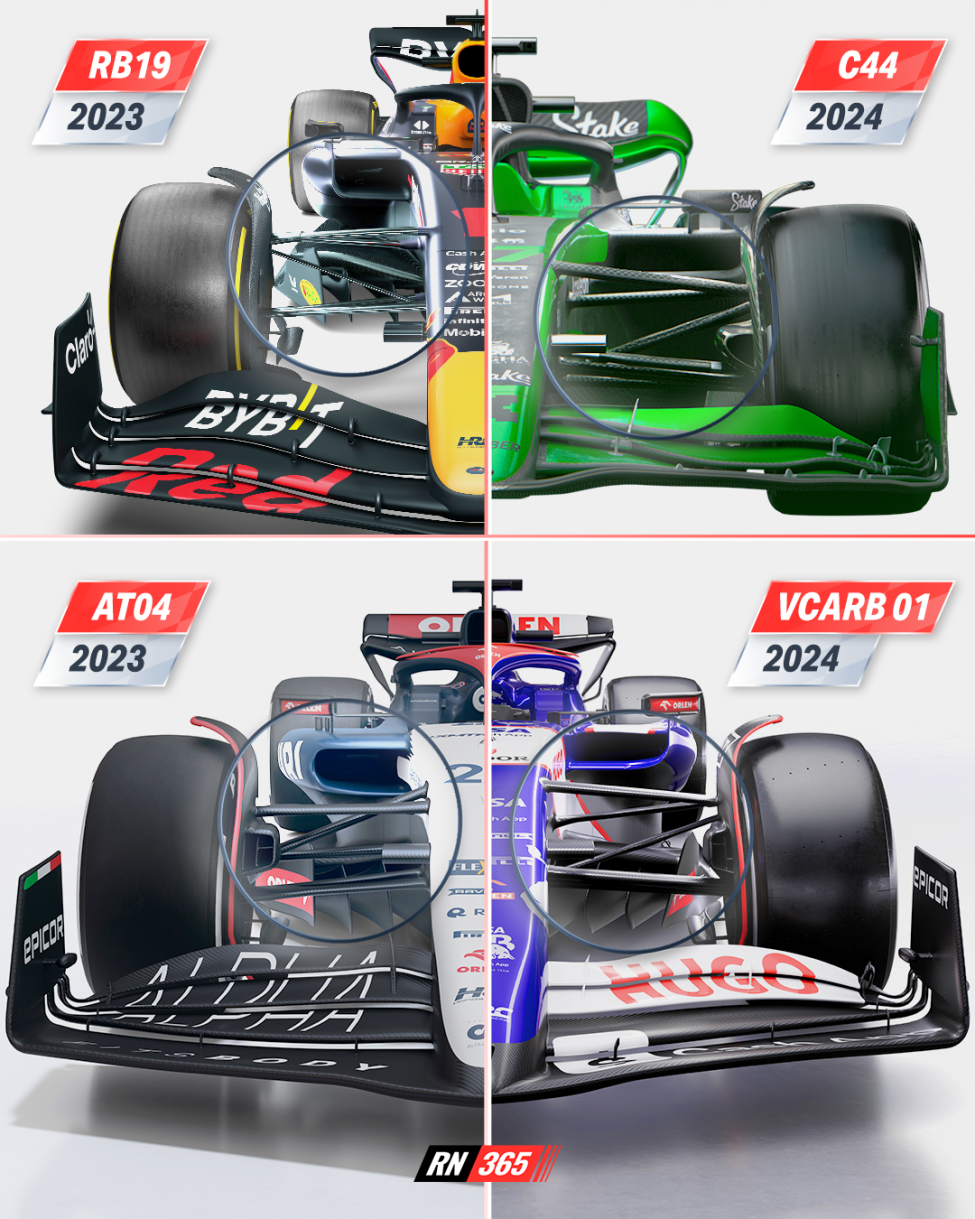Red Bull has utilised a split suspension philosophy for years - pull-rod suspension at the front and push-rod at the back of the car.
McLaren followed suit last season and, following the first full week of season launches this year, Stake Sauber and RB have joined the trend.
But why? A pull-rod is attached lower to the chassis, which provides a lower centre of gravity for the car. This adjustment causes an 'anti-dive' effect at the front of the car, meaning it becomes less sensitive to changes of direction or diving under braking and acceleration. This can be crucial under the ground-effect aerodynamic regulations as a car that remains flatter to the ground can provide a more stable aerodynamic platform.
A pull rod pulls on the suspension over the bumps of a track, where the higher-mounted push rod "pushes in" the suspension, which explains the names. However, it takes more pulling force to make a pull rod work than pushing force to make a push rod work properly.
Nonetheless, a pull rod can be made just a little thinner, since carbon's properties mean it is more sensitive to compression than to pulling forces. Around 100g can be saved on each side of the car by using pull rods.
'Aerodynamic tool'
Whilst it sounds as though there are only positives in using pull-rod suspension, Stake Sauber Technical Director James Key has conceded that it can be a "horrible" undertaking for the technical team.
Key explained that positioning the suspension elements has become a lot trickier and that it is much harder for mechanics to work on them because they are attached so low at the bottom of the chassis, where, for example, the car's pedals are also positioned.
Clarifying why the change in philosophy will be worthwhile, Key told media including RacingNews365: "It's better for aerodynamics.
"It shows that with this generation of F1 cars, the suspension has become much more of an aerodynamic tool, rather than it just being something that holds the wheels in place.
"In other words, the suspensions are being used much more to make the aerodynamic concept work as optimally and consistently as possible."
Don't miss out on any of the Formula 1 action thanks to this handy 2026 F1 calendar that can be easily loaded into your smartphone or PC.
Download the calenderMost read
In this article









Join the conversation!